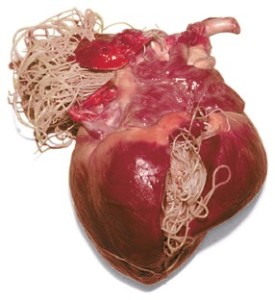There are a million places to get a new dog if you’re in the market for one. Some, like petstores or huge kennels, are never a good idea. But when it comes down to the simple question of do I get a puppy from a breeder or do I get an adult dog from a shelter or rescue, there are definite pros and cons to consider so that you can make the best choice for your household. Pros and cons are not universal— some people are more flexible and have a less specific vision of what works for them while others need predictability; some people do not want to deal with puppyhood while others can’t imagine bringing home anything but a puppy.
Sometimes there is no clear-cut answer, but lets lay out some of the pros and cons.
First let’s look at breeders. There is a world of variation in quality of breeders out there, but for the purposes of this post, let’s just talk about people who are breeding with quality in mind– people who a re health-testing their dogs before breeding them (hip certifications, eye certifications– whatever is appropriate to the breed), who are doing their research before breeding and who care where their pups are going and what happens to them.
re health-testing their dogs before breeding them (hip certifications, eye certifications– whatever is appropriate to the breed), who are doing their research before breeding and who care where their pups are going and what happens to them.
The pros of buying a puppy from a breeder:
- You’ll have an idea of the genetic lines behind your dog including temperament and health. If you’re looking for a mellow house-dog Golden Retriever, you probably don’t want to buy a pup from somebody breeding high-energy hunting dogs. And you always, always want to know the family of dogs that your pup is coming from are healthy.
- While genetics are always a bit of a wildcard, you’re doing everything you can to stack the deck in your favor. If you breed a dog with good hips to a dog with good hips, chances are pretty good that you’re going to get dogs with good hips. If you’re buying a pup of a breed that is prone to seizures, knowing that none of his immediate relatives have had seizures is a big plus. Nothing is absolute, but the odds are with you.
- You’ll get a lifetime of support. A good breeder is invaluable in the assistance and knowledge they can provide. Plus, it’s nice to have a cheerleader sometimes, especially through those teenage months.
- You get a health guarantee. Good breeders stand behind the pups that they’re producing. But be careful to read the fine print to see what exactly the guarantee is.
- A good breeder will have already started the oh so important process of socialization. Pups will have been exposed to different sounds, different textures, different people. Some will have already been started on crate training. They’ll be on their way to being well-adjusted, happy dogs.
- A good breeder will take back a dog at any time, no matter what. Your pup will always have a safe place to land if something happens that you can no longer keep him, or even if he is simply not a good match for your family.
So what about the cons?
- Good breeders don’t breed often (a litter or two a year) so you will likely have to wait.
- It takes time and effort on your part to find and reach out to breeders to find one who is a good match for you and your family.
- Good breeders can be hard to find, especially if you don’t have connections in The Dog World.
- The pricetag. No getting around it. It costs money to do things right, so your pup will cost a bit more. Although the purchase price is still a drop in the bucket compared to the price of caring for a dog for his lifetime, the initial layout of cash can still feel a bit painful.
On the flip side, there are tons of good dogs out there in shelters and rescues who are there through no fault of their own. It’s a common myth that dogs in shelters are there because of behavior problems, but in this day and age, money, housing, and job changes are huge reasons for dogs not staying in their homes.
What are some benefits of adopting a dog from a shelter or rescue?
- Adult rescues are often very “what you see is what you get”, especially if they’ve been in foster care. You can get a good idea of what kind of dog you are bringing home, which takes some of the mystery out of adopting. You’ll know simple things such as size and coat type (it can be so hard to predict what mixed-breed pups are going to turn into when they grow up), but you’ll also get a good idea of temperament– is this dog good with other dogs? cats? kids?
- Many dogs in shelters have already lived in somebody’s home and are housebroken and come with some basic skills. Training a new dog is important regardless because it is such a huge relationship-builder, but I’m always a big fan of pre-housebroken dogs, myself.
- Most rescues will take back dogs that they’ve placed, again, for any reason, so if something should happen, the dog has a safe place to go.
- You’re saving a life. Whether you adopt from a shelter that does put dogs to sleep due to overpopulation or you adopt from a no-kill rescue, you’re opening up a spot for another dog in need. Plus, there are simply some great dogs in shelters, and one of them might just be The Dog for you.
But there are also c ons to adopting:
ons to adopting:
- There are a lot of unknowns. You have no idea what kind of health issues the parents and grandparents of your new dog may have had. You get no health guarantee, and there’s no accountability.
- With a puppy, you’re bringing home a complete wildcard. You might adopt a “Chihuahua mix” puppy and have it grow into a 30 pound dog. For some people, that’s part of the fun. For others, not so much.
- You’re not getting a blank slate. When you bring home an adult dog, you’re bringing his history home with him. While a lot of behavior issues will be readily apparent before your pooch comes home, some are not. While a dog may not show issues in a highly structured foster home, for example, he may have some issues in your more relaxed home environment.
- It can be a lot easier to teach manners to a puppy than to an 80 pound adolescent Labrador. Bad habits can be hard to break; it depends on how much time and effort you’re willing to put into it.
- Some rescues can be very inflexible in their screening. They want the best homes possible for the dogs in their care, and they have a very concrete vision of what that is. It can take some time to find a rescue that you mesh with. (Shelters tend to be much more flexible, but you lose the benefits of seeing what a dog is like in a foster home environment.)
- If you have your heart set on a certain breed or type of dog, you may need to be very patient and persistent in your search. Some breeds are a dime a dozen in rescue, others are in much higher demand. It all depends on what you’re looking for.











